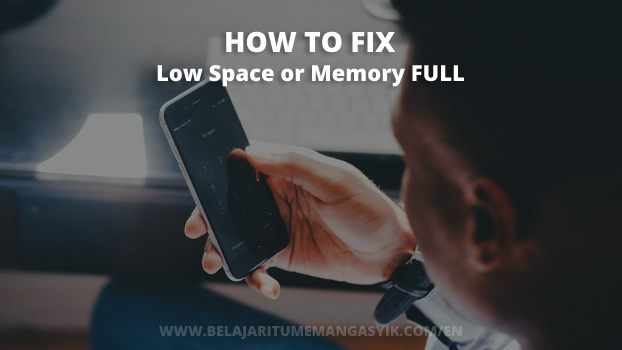To fix the problem of low space or full memory, or rather full storage. The most effective way is to delete or move the files from your device to the SD or PC, starting with photos, videos, music. Which is what usually takes up more space.
The other big problem is apps and games. You will need to uninstall or downgrade as many as possible or move them to the SD card.
Before explaining how to clear memory, I want to clarify How To Fix The Problem of Low Space. There are several reasons why this can happen. One of the most likely is that the device is a clone or fake. Where the storage numbers and other specifications are rigged. The manufacturer may list several gigabytes (GB) of capacity. But the reality is that the memory chip only has several megabytes (MB) of storage.
In the event that you cannot install applications from the Play Store despite having space. On some devices (especially old ones) it is necessary to have at least 1 GB of free internal memory (although the size of the app to be installed is less than 1 GB).
1. Look In Settings
Let’s start with something simple. To free up full memory you can use the options that the device itself already brings and are quite safe to use.
For example, in the case of some Samsung Galaxy this option is found in Settings, Device maintenance, Storage, Unlock. Do not worry that this option will not delete your files or apps.
2. Clear the Cache
Apps like Facebook, YouTube, Spotify and Web Browsers can each accumulate hundreds of megabytes of “unnecessary” data that you are missing so much. That “cache” is temporary data that these and all Android apps accumulate mainly to work or load faster. For example, in the case of browsers, cookies, files and images or thumbnails of websites that you probably only visited once.
To clear the cache go to system settings, applications, menu button and “Sort by size” to attack the most heavy apps, tap on the app, Storage and finally clear cache.
By clearing the cache you are only clearing “internal data” of the app. Your settings, progress, files, logins and user data in general are NOT erased. It is to leave the app as newly installed, but keeping your data.
3. Move Files To The Cloud
The internal storage of your Android is mainly filled with photos and videos that you will have to delete. As I explain below, but in case you do not want to lose them. You may want to have a backup in the cloud. There is no simpler way to do this than through the Google Photos application ( APK ).
To access the settings for backup and synchronization on Google Photos, you will need to display the side menu and select “Settings.” From there, you will be able to find the options for “Backup and synchronization.
Activate the option, choose your Google account and activate the photos, videos and folders that you want to back up (you can also do this from the “Device folders” option).
If you return to the main Google Photos screen, your photo at the top should see the progress of the sync.
Once the cloud backup is complete, you can easily remove media from your device by going to Google Photos Settings, Free Up Space (or also Manage your library option).
4. Manage Files Manually
As an alternative to permanently losing your files through deletion, it is advisable to consider saving them to your computer or an SD card for future use.
You will simply have to connect the mobile to the PC with the USB cable. From the Windows file explorer you will be able to access the internal storage of the device.
Cut and paste everything you want to back up. If the device has the SD card inserted, you will be able to move the files there from the internal memory.
Your other option is to use the file manager of your Android “My files” from where you can also access the storage of your device to delete, copy or move your files to the SD by holding down on them. You can start by reviewing the DCIM and Downloads folders, which tend to be the largest.
If possible, install applications that help you see the internal memory of the cell phone graphically to find the largest files. One of them is DiskUsage, whose APK can be found here.
5. Manage Applications
If your device supports an SD card and you have space available, you can move your applications there so you don’t lose them and continue using them normally.
The simplest way is to go to Android settings, Applications, tap on the desired application, “Storage” and finally Change the storage location to “SD Card”.
Unfortunately, this option is not available on all devices nor is it supported by all apps. If this is your case, maybe you can configure the SD as internal memory, from Settings, Storage, SD card, Settings, Format as internal storage.
This can allow you to move apps around and expand internal memory. The other option is through root permissions and apps like Link2SD. I have covered all these methods in this article.
If you have no choice but to get rid of some applications, an efficient method is from the Play Store, main menu, My apps and games, Installed, Storage. By default, the applications that you will see here will be ordered starting with the least used. Check the box to the right of the apps you want to uninstall. Tap on the “Unlock” button.
The great advantage of this method is that all the apps will be uninstalled at once. Without having to individually authorize the uninstallation of each one.
As happens when doing it from the Android settings, Applications, Application name, Uninstall. Thats How To Fix The Problem of Low Space in your gadget.
